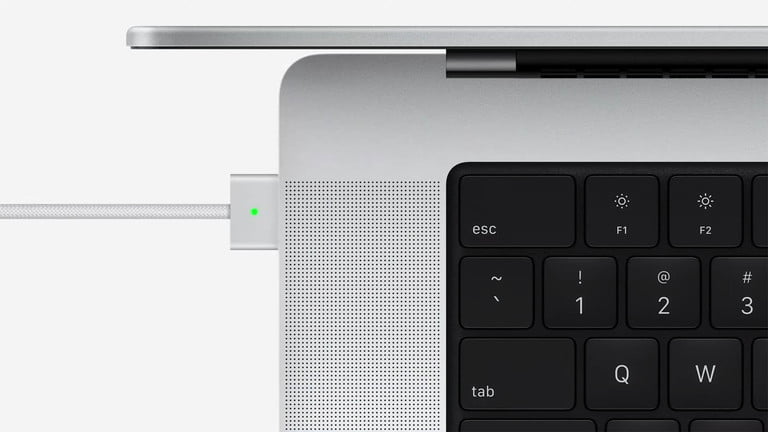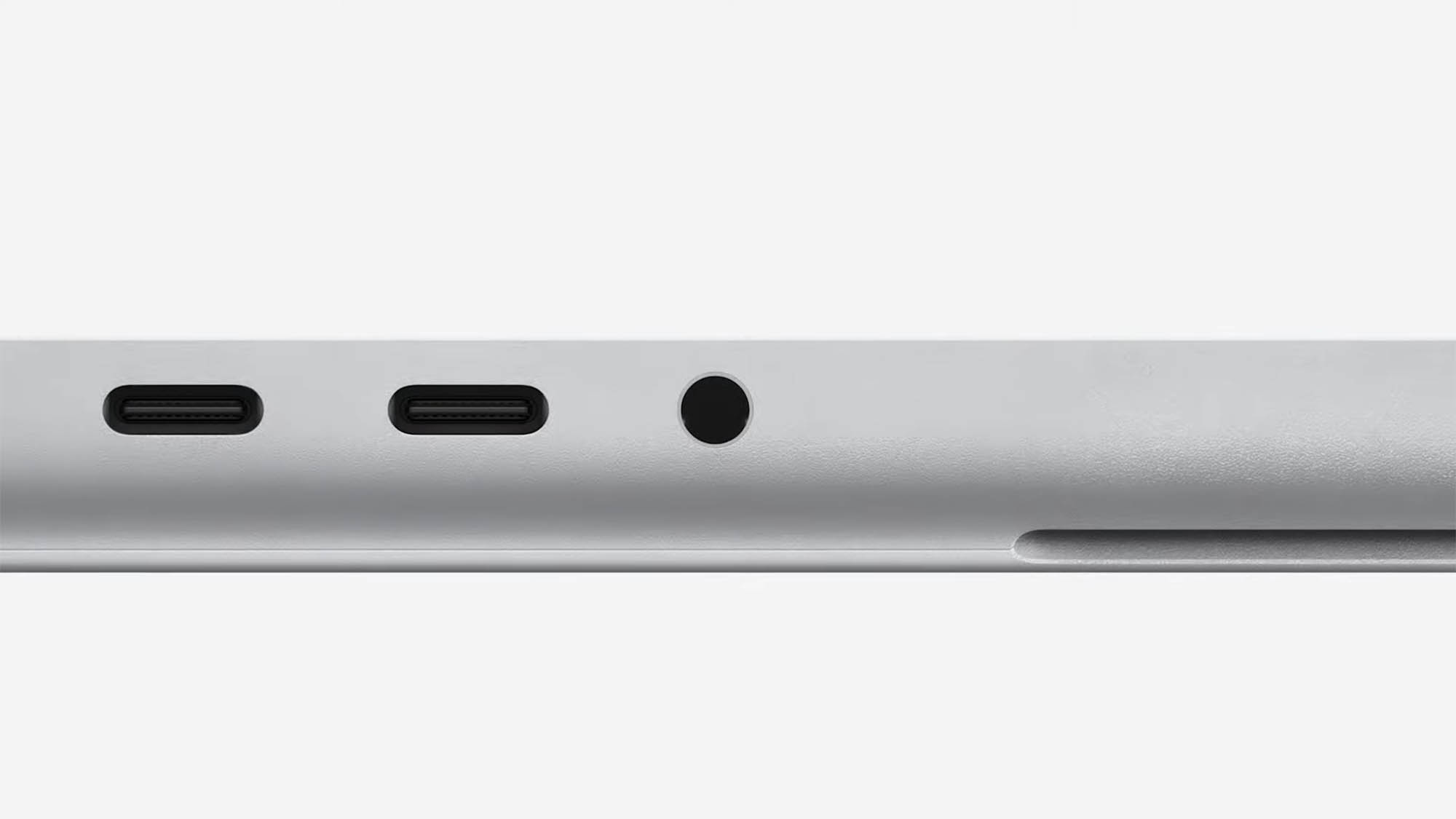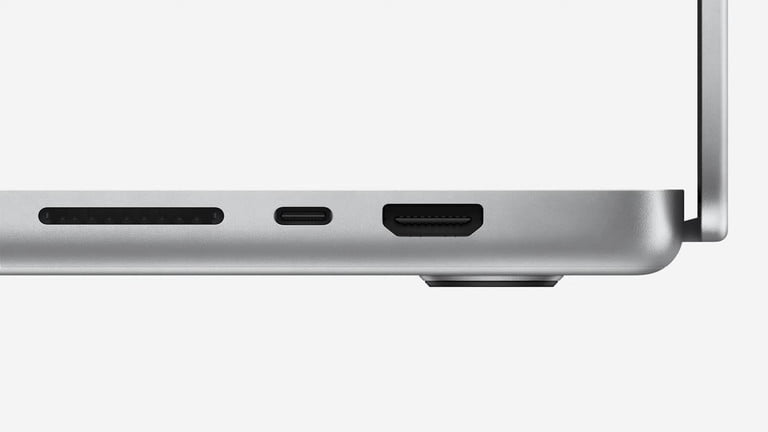Nearly a year after the first M1-based MacBooks debuted, we’re finally getting the sequel. Apple’s prerecorded Unleashed event revealed updates to Apple Music and the Mac, including new processors and a redesign for the MacBook Pros.

Apple CEO Tim Cook opened the company’s special Unleashed presentation to announce a new Apple Music plan, new MacBook Pro models with a notch, new M1 Pro and M1 Max processors, and new Home Pod Mini colors in time for the holidays.
The new MacBook Pros with a notch

Apple announced that it has redesigned the MacBook Pros to take advantage of the new M1 Pro and M1 Max family of processors — which we’ll get to in a second — and the new models come in 14-inch and 16-inch sizes. The new 14-inch MacBook Pro and
This latest redesign is the first major change to Apple’s Pro notebook lineup since 2016, when the company introduced the Touch Bar and butterfly keyboard switches to the MacBook Pro. This year, the Touch Bar is gone, and Apple announced that it is bringing the popular Magic Keyboard design to the laptop, complete with individual Function keys and a TouchID fingerprint reader. Now, the keys are inlaid in a black well to highlight the glyphs and backlighting.
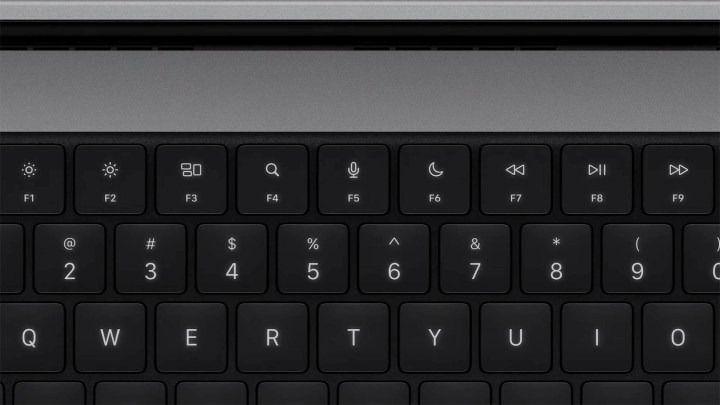
The MacBook Pro is a combination of groundbreaking performance, amazing battery life, and pro-grade reliability, Apple said.
This year, both notebooks get a notched screen design to accommodate the FaceTime camera. The company claims that the camera hardware got a huge improvement — moving to a 1080p FHD camera with a larger sensor that delivers twice as many pixels and lets in twice as much light for improved lowlight performance and clear calls.
Other changes include the return of the HDMI port and SD card slot — which creative pros will appreciate — along with MagSafe charging. Apple is moving to MagSafe 3 this year, though it noted that users can continue to charge over Thunderbolt if they prefer. Fast charging is also supported, and the MacBook Pro can go from o to 50% battery life in just 30 minutes of charging. The laptop has three
The 14-inch model is 0.61-inch thick and weights 3.5 pounds, while the larger 16-inch model comes in at 0.66-inch thick and weights up to 4.8 pounds, Apple said.

Both models benefit from a new thermal design that can move 60% more air even when the fan is spinning in low power mode. However, for most basic tasks, Apple noted that the power efficiency of M1 means that the fans don’t even need to come on, which promises whisper-quiet operations.
You can now connect three Display XDR monitors and a 4K TV at the same time with a MacBook Pro configured with M1 Max or up to two Pro Display XDRs with an M1 Pro model.
“This is the most advanced connectivity ever on a Mac notebook,” Apple said.

One of the biggest changes to this year’s refresh is the display, which comes with the notched design. The displays are now larger, Apple said, with a 16.2-inch display on the 16-inch model and more pixels than before. The 14-inch model has a 14.2-inch display.
ProMotion is now coming to the Mac with an adaptive refresh rate on the screen of up to 120Hz. Apple said the display now uses the Liquid XDR display technology with 10,000 mini LEDs to power the backlighting. There are also new optical films and diffusers. Thousands of mini LEDs are arranged in local dimming zones to deliver 1,000 nits of sustained brightness and 1,600 nits of peak brightness to bring HDR content to life with deeper blacks.
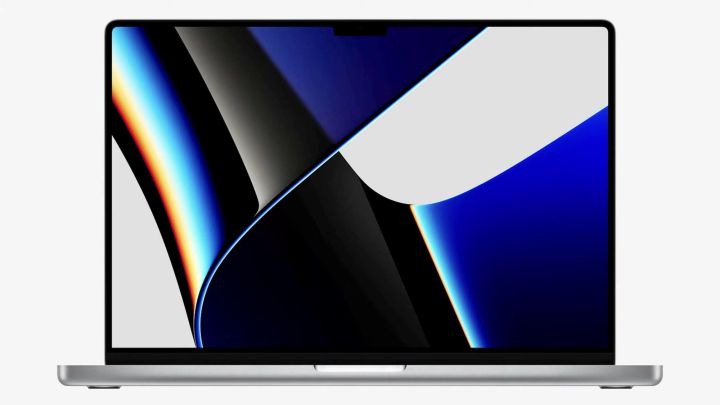
The 16-inch model supports 7.7 million pixels with a resolution of 3456 x 2234, while the smaller notebook supports 5.9 million pixels with a resolution of 3024 x 1964. Both laptops have a pixel density of 254 pixels per inch (ppi), Apple said.
For audio, Apple uses a new studio microphone array with a 60% lower noise floor. Larger tweeters and woofers deliver 80% more bass and go half an octave deeper. The six-speaker sound system also is coming to the 14-inch model and supports spatial audio for a theater-like experience and a rich 3D soundstage.
In terms of performance, the new MacBook Pro with M1 Pro and M1 Max deliver twice the CPU performance and up to 4x faster graphics performance than the prior Intel-based MacBook Pro. Both 16- and 14-inch models can be configured with an M1 Max processor. On the 14-inch model, Apple said that GPU performance is up to 14x faster on the M1 Max processor.
With the unified memory architecture, Apple claims the new system can get up to 64GB of memory for workflows that were unimaginable on a notebook before. Apple also said you can edit up to 30 streams of

The SSDs are also getting faster — up to twice as fast — as those on Intel-based systems. Apple said the SSDs can support 7.4GB/s transfer speeds.
The new MacBook Pros can go for up to 17 hours of video playback on the 14-inch model and 21 hours on the 16-inch model, which is the longest battery life ever on a Mac notebook. The notebooks can support fast charging for a 50% charge in 30 minutes.
Prices start at $1,999 for the 14-inch mode and $2,499 for the 16-inch model. The new MacBook Pro models will be up for order today and ship next week. Both new models will sell alongside the M1-powered MacBook Pro 13-inch.
M1 Pro and M1 Max for the Mac
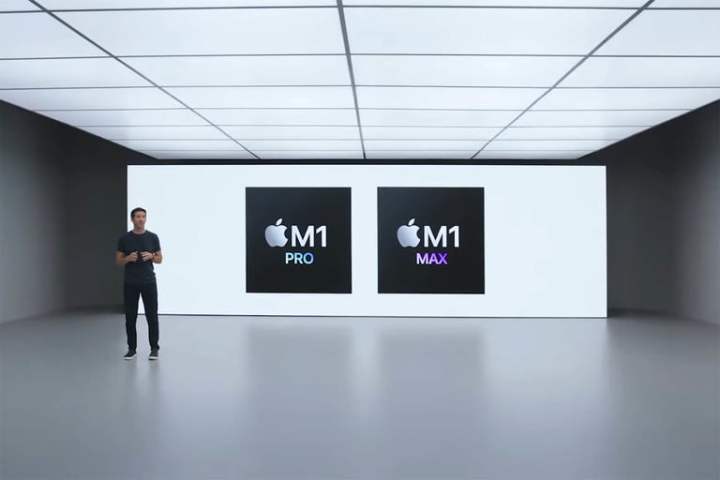
Powering the recent success Apple’s had with the Mac is the company’s in-house M1 processor, which has made its way also to the iPad Pro. This year, Apple is expanding the M1 family with two new processors — the M1 Pro and the M1 Max. Both processors will make their way to the new 14-inch and
Both chips come with a 10-core processor that’s designed to outpace the Intel-based competition, Apple executives stated during the company’s Unleashed keynote. The M1 Pro comes with a 16-core graphics processor that’s integrated into the ARM-based CPU design, 32GB of unified memory, and up to 200GB/s of memory bandwidth. The M1 Pro also has a 16-core Neural Engine and dedicated encode and decode media engines that support ProRes codecs.

The more powerful M1 Max comes with a boosted 32-core GPU, 64GB of unified memory and twice as much memory bandwidth for some insane levels of performance.
The new M1 Pro is designed for pro users and is described as the next breakthrough for the Mac. It features more than 33 billion transistors, twice as much as the M1, Apple said. It delivers 70% faster CPU performance than the M1 and twice as fast graphics performance.

The M1 Max is the more premium silicon of the two, and it launches with nearly 60 billion transistors — almost twice as many as on the M1 Pro, Apple said. Compared to the Pro, the Max delivers twice the graphics performance.
In applications like Logic Pro, Apple claims that the Max CPU delivered 3x the performance compared to a quad-core Intel Core i7 processor while the Pro model delivered 1.7x the performance. For GPU performance, Apple claimed that the M1 Max delivers nearly 14x the GPU performance compared to Intel’s integrated Iris Plus GPU on the 14-inch model configured with a 32-core graphics processor.
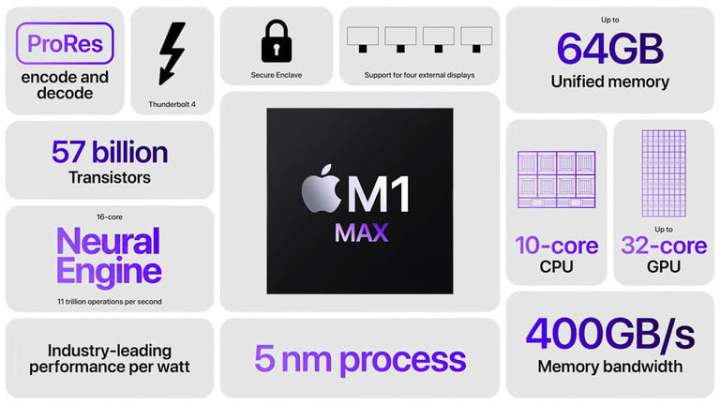
On the 16-inch model, Apple claims the new M1 Max can render 8K videos nearly 3x faster than a comparable system equipped with AMD’s Radeon Pro 5600M graphics with 8GB of HBM2.
Compared to a PC processor, Apple said that these new chips deliver better performance while consuming 70% less power. The M1 Max is up to 2.5x faster in graphics performance, and Apple claims sustainable GPU performance whether plugged in or on battery.
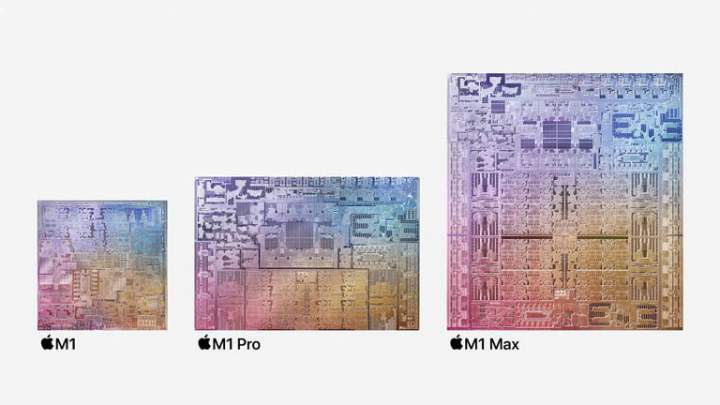
“It’s by far the most capable chip that we’ve ever built,” Apple said. Apps launch instantly and there’s instant wake from sleep. And macOS and apps will be able to take advantage of the the unified memory architecture of the custom processors, Apple’s Craig Federighi said. There is also in-line encryption for files, fast verified secure boot, and other security features.
Rosetta 2 continues to function to allow Intel apps to run on the new M1 Pro and M1 Max processors. Native apps are designed to take advantage of M1 Pro and M1 Max. Apple said there are more than 10,000 Universal apps available today.
AirPods 3
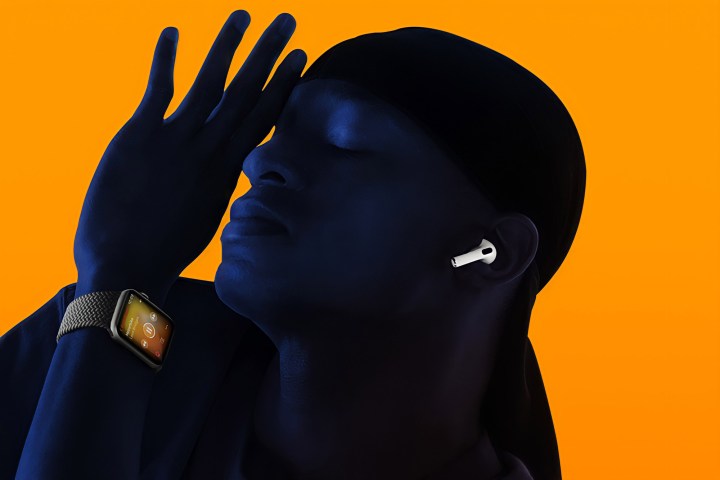
And true to rumors, Apple announced new AirPods at its event.
“Our users love listening to music with AirPods,” Apple said, highlighting the device’s
“It’s a whole new way to experience your favorite music,” Apple added.
With the AirPods 3, Apple is bringing its

Apple also announced a new shape that contours to your ears and software-defined Adaptive EQ to give you a more personalized sound experience. The case now delivers up to 30 hours of total listening time and also comes with MagSafe wireless charging capabilities.
Orders can be placed today, and prices start at $179. The AirPods 2 will continue to be sold, and are now priced at $129.
“With this great lineup, there’s something for everyone,” Cook said.
Apple Music Voice Plan
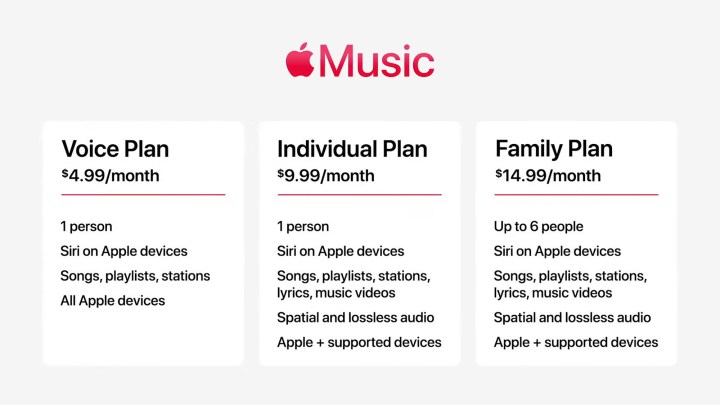
Apple announced a new Voice Plan for Apple Music, which combines Apple Music with the power of Siri and starts at $5 per month. The price is half of what the current Individual Plan sells for and should attract more users to Apple’s music streaming service. Apple Music Voice Plan launches in 17 countries later this month, and it will be available on all Apple devices.
With Apple’s cheapest streaming tier, you’re still getting access to all of the songs, playlists, and stations. However, you won’t get
“We’re excited that even more people will be able to access Apple Music simply with their voice,” Cook said.
Home Pod Mini

And one of the best ways to experience Apple Music is with Home Pod Mini, Cook added.
The small speaker got an update this year with bright colors: Yellow, orange, and blue. Apple’s diminutive speakers come with the same great features, including Siri capabilities, intercom, and more. The new colors join white and space gray and will launch in December for the same $99 price.
HomePod mini will look great in more places around your home, Cook said.
Editors' Recommendations
- MacBook Pro 16 vs. MacBook Pro 14: The important differences
- The case for buying the M2 MacBook Air over the M3 model
- Why you should buy a MacBook Air instead of a MacBook Pro
- Apple quietly backtracks on the MacBook Air’s biggest issue
- Why gaming on the M3 MacBook Air has left me impressed

